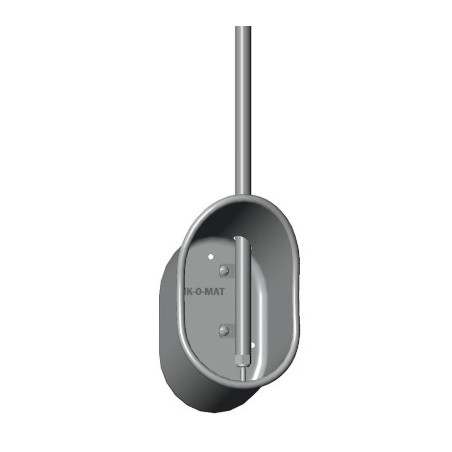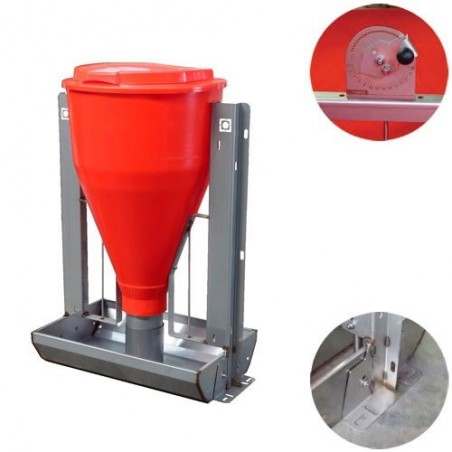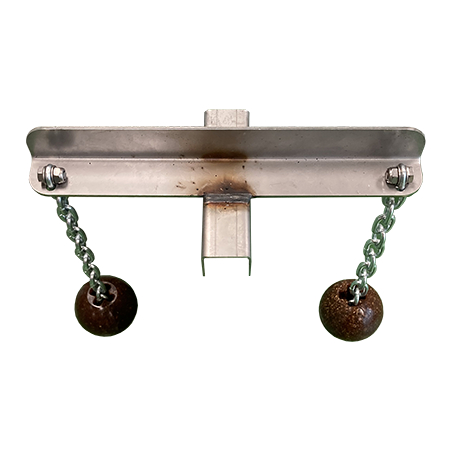The effects of pen location on swine thermoregulation and growth performance were determined over 6 weeks during late summer. A total of 128 mixed sex pigs [Duroc × (Landrace × Yorkshire)] were randomly assigned to 16 pens in two grow-finish barns (n = 8 pens/barn; 57.43 ± 1.33 kg initial body weight (BW)). Pen locations were determined based on orientation to ventilation fans and air inlets. Internal pens (IP; n = 4/barn) were in direct line of sight between the fans and air inlets while peripheral pens (PP; n = 4/barn) were located 0.70 ± 0.29 m to either side of a fan. Two sentinel gilts per pen were selected and vaginal temperature (TV) was measured in 10-min intervals using TV data loggers. Additionally, trunk skin temperature (TS) was measured with an infrared camera and respiration rate (RR) was measured by counting flank movements of the sentinel gilts twice daily (0800 and 1500 hours). Pen airspeed was measured twice daily (0800 and 1500 hours) at pig level with an anemometer. Individual pen ambient temperature (TA) and relative humidity (RH) were recorded daily in 10-min intervals. Feed consumption and BW were determined every 2 weeks. Data were analyzed using PROC MIXED in SAS 9.4.
Although airspeed was reduced overall (P = 0.01; 11%) in PP compared with IP, no differences (P > 0.10) in TA (27.53 ± 1.73 °C) or RH (68.47 ± 5.92%) were detected. An overall increase (P ≤ 0.02) in TV (0.23 °C), minimum TV (0.18 °C), and maximum TV (0.29 °C) was detected in PP versus IP housed pigs. Similarly, from 0800 to 1900 hours and 2000 to 0700 hours, TV was greater overall (P ≤ 0.01; 0.22 and 0.25 °C, respectively) in PP compared with IP housed pigs. An overall decrease in TS (P = 0.04) was observed in PP (37.39 ± 0.14 °C) compared with IP (37.61 ± 0.14 °C) housed pigs. No RR differences (P > 0.10; 76 ± 4 breaths per minute) were detected with any comparison. While no average daily gain (ADG) and average daily feed intake (ADFI) differences were detected (P > 0.10; 0.74 ± 0.03 kg/d and 2.26 ± 0.08 kg/d, respectively), gain-to-feed ratio (G:F) was decreased (P = 0.02; 6%) in PP compared with IP housed pigs.

In summary, pigs located in PP had greater body temperature and reduced G:F despite similarities in TA and RH between all pens.
Kpodo KR, Duttlinger AW, Johnson JS. Effects of pen location on thermoregulation and growth performance in grow-finish pigs during late summer. Translational Animal Science. 2019; 3(4):1375-1382. https://doi.org/10.1093/tas/txz033







